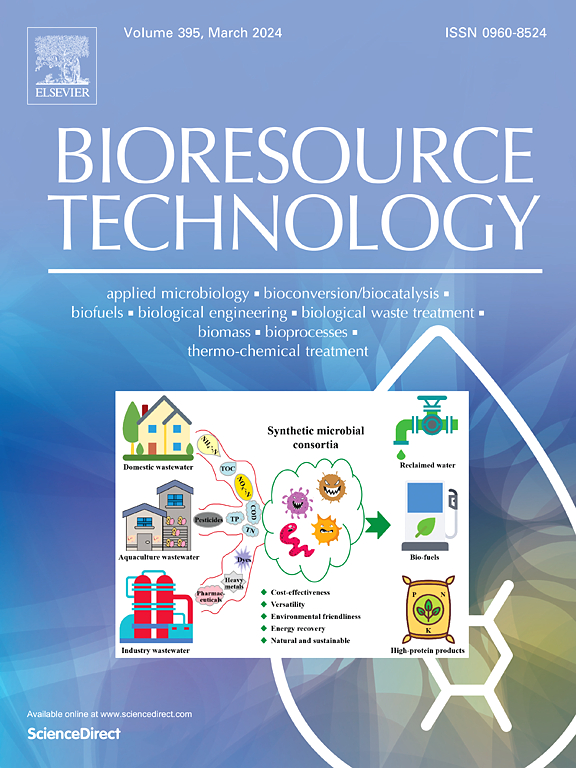Unveiling the synergistic mechanisms of multi-ionic removal in microbial desalination cells: Ion transfer, electrochemical behavior and microbial response
IF 9
1区 环境科学与生态学
Q1 AGRICULTURAL ENGINEERING
引用次数: 0
Abstract
Microbial desalination cells (MDCs) have traditionally employed simplified NaCl solutions as feedwater for synchronous desalination and bioenergy recovery. Nevertheless, the specific mechanisms by which MDCs remove complex multi-ions from saline wastewater remain obscure. This study thoroughly investigated ion migration, bioelectrochemical dynamics, and microbial ecological responses across three distinct configurations: monovalent ions − PMDC, divalent cations − CMDC and anions − AMDC. Results showed desalination efficiencies exceeding 97 % among all bioreactors, with CMDC outperforming AMDC yet lower than PMDC. The transmembrane behavior of ions with varying charges was regulated by electric field gradients, with cation migration hierarchies following Na+ > Ca2+ > Mg2+ and anion transfer prioritizing CO32– > SO42- > Cl-. A mathematical model further elucidated variations in ion diffusion and salt transfer. The CMDC exhibited peak power density (927 mW/m2), achieving 1.57 and 1.99 times that of PMDC and AMDC, due to reduced ohmic resistance and improved cathodic kinetics. Prolonged operation exposed critical limitations: multivalent cations induced 21.4 % desalination efficiency loss and 38.3 % power decline via membrane scaling and biofouling accumulation. Microbial community analysis highlighted Lentimicrobium (26.7 %), Desulfomicrobium (12.3 %), and Oscillochloris (9.2 %) as dominant electroactive genera, with their synergistic interactions and functional metabolic pathways (carbon fixation, nitrogen metabolism, and sulfur reduction) critically enhancing organic degradation and bioelectricity generation in multi-ionic MDCs. This comprehensive study bridges critical gaps in understanding electrochemical and microbial responses in MDCs treating hypersaline wastewater, advancing their practical implementation.

揭示微生物脱盐电池中多离子去除的协同机制:离子转移、电化学行为和微生物反应
微生物脱盐电池(MDCs)传统上采用简化的NaCl溶液作为同步脱盐和生物能源回收的给水。然而,MDCs从含盐废水中去除复杂多离子的具体机制仍然不清楚。本研究深入研究了三种不同构型的离子迁移、生物电化学动力学和微生物生态响应:单价离子- PMDC、二价阳离子- CMDC和阴离子- AMDC。结果表明,所有生物反应器的脱盐效率均超过97%,其中CMDC优于AMDC,但低于PMDC。不同电荷离子的跨膜行为受电场梯度调控,阳离子迁移顺序依次为Na+ >; Ca2+ > Mg2+,阴离子转移顺序依次为CO32 - >; SO42- > Cl-。一个数学模型进一步阐明了离子扩散和盐转移的变化。由于降低了欧姆电阻和改善了阴极动力学,CMDC的峰值功率密度为927 mW/m2,分别是PMDC和AMDC的1.57和1.99倍。长时间的操作暴露出关键的限制:多价阳离子通过膜结垢和生物污垢积累导致21.4%的脱盐效率损失和38.3%的功率下降。微生物群落分析显示Lentimicrobium(26.7%)、desulfomicroum(12.3%)和Oscillochloris(9.2%)是主要的电活性属,它们的协同作用和功能代谢途径(碳固定、氮代谢和硫还原)对多离子MDCs的有机降解和生物发电至关重要。这项全面的研究弥补了理解MDCs处理高盐废水的电化学和微生物反应的关键空白,促进了它们的实际实施。
本文章由计算机程序翻译,如有差异,请以英文原文为准。
求助全文
约1分钟内获得全文
求助全文
来源期刊

Bioresource Technology
工程技术-能源与燃料
CiteScore
20.80
自引率
19.30%
发文量
2013
审稿时长
12 days
期刊介绍:
Bioresource Technology publishes original articles, review articles, case studies, and short communications covering the fundamentals, applications, and management of bioresource technology. The journal seeks to advance and disseminate knowledge across various areas related to biomass, biological waste treatment, bioenergy, biotransformations, bioresource systems analysis, and associated conversion or production technologies.
Topics include:
• Biofuels: liquid and gaseous biofuels production, modeling and economics
• Bioprocesses and bioproducts: biocatalysis and fermentations
• Biomass and feedstocks utilization: bioconversion of agro-industrial residues
• Environmental protection: biological waste treatment
• Thermochemical conversion of biomass: combustion, pyrolysis, gasification, catalysis.
 求助内容:
求助内容: 应助结果提醒方式:
应助结果提醒方式:


